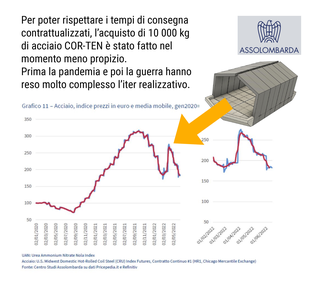Raw materials are not available and prices have doubled
The war in Ukraine has exacerbated the critical issues in supply chains caused by the pandemic, with sharp increases in the prices of some raw materials and growing delays and increases in freight logistics hampering normal business operations.
In Q1 2022, in fact, more than half of the manufacturing companies in the Northwest (51%) said they were experiencing obstacles to exports. Among the main adverse factors, 'prices and costs' (for 24% of the enterprises) and 'longer delivery times' (for 15%) stand out. In addition, the share of companies highlighting 'other factors' among the main obstacles to exports increased considerably, from 8% in Q4 2021 to 26% in Q1 2022, an increase at least partly attributable to the instability caused by the Russia-Ukraine conflict.
A first focus therefore concerns logistics, both in terms of delivery times and costs.
As far as the 'lengthening of delivery times' is concerned, the crisis in Ukraine is part of a logistics picture already characterised by great uncertainty: throughout 2021, delays in supply chains gradually intensified, only to decrease between January and February 2022, thanks to the first signs of an easing of pandemic restrictions noted in January and February. But in March 2022, with the outbreak of war, average delivery times rose again across the euro area.
On the cost front, the invasion of Ukraine has led to considerable increases in freight rates on the sea routes bordering the affected territories, both for small tankers operating between the Black Sea and the Mediterranean and for cargo ships transporting grain and cereals via the Black Sea. Local war-related price rises are not affecting aggregate indices for the time being, with global shipping costs continuing to move in line with previous trends.
 Back
Back

Social
Contatti
umberto@cavenago.info